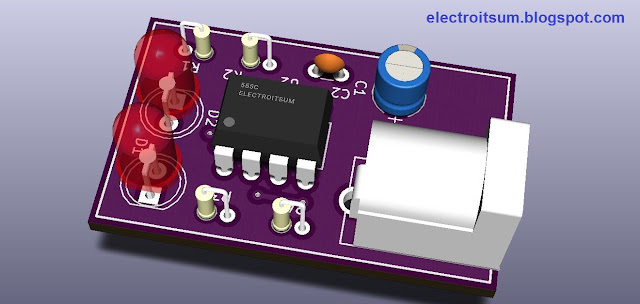1. Open your kicad software which will look like as below given screenshot. After that go to file and create a new project. you can give project name as you want. At the end of the process, kicad asks you “Do you want to create a new empty directory of the project?” and choose yes, because it is a good practice to put all project files in a specific directory and it also prevents the missing file problems.
2. Now in the PCB designing process, first of all, we have to create a schematics of the project or in a simple language, we have to represent our whole circuit in symbolic form. For that we have to access the schematic editor and we can do it in three ways.
a. By sidebar
b.
By upper bar
c. By Tool menu
3. Now double click on filename.sch from sidebar
and after that, a new window will open which is known as electronic schematic editor (Eeschema), and here we will draw our schematic circuit. For placing the component choose place
component tool from the sidebar as shown in the screenshot.
4. Start placing components after selecting the tool. It
will ask you to choose the component which is going to be placed. Select your component as shown in the below screenshot.
5. After placing all components you have to connect
them according to the circuit design and for that choose wire tool from the sidebar
and then click on the first pin which you want to connect after that click on
the next pin where we want to terminate wire connection. Similarly do all
connections.
6. After all connections, our schematic
design is done now we have to go through some steps for converting this schematic circuit
into PCB layout. And for that first of all we have to annotate the schematic
and for that go-to tool menu and click on annotate schematic and simply click
on annotate (we will discuss options in different tutorials). Annotating is a
procedure where we assign a unique name to our used components serial wise like first IC “U1”
and second IC as “U2” and so on. Kicad can do all this work by itself using the annotating schematic tool.
7. After annotation, we are ready to assign footprints to our schematic symbols used in our design. In footprint assigning
procedure we simply assign the device package type we are going to use in PCB. This
step is very important because here you tell to kicad that we are going to use
which type of components. For example, let consider you used 555 ic in your
schematic but when you are going to create layout then how software treat 555 ic,
is it SMD or THT package? And this type of problem is resolved by assigning footprint
to schematic symbols.
8. For assigning footprint go-to tools and then
assign component footprint. Now here a window will open with a list of used components, click on the component and after that open the footprint library which is
situated on the left side of the component list. You will find the all
possible footprint at the right side of the component list choose the footprint
by double-clicking on it and the system will assign that footprint to the component which
you selected. If you
want to view how footprint actually looks like then simply select footprint and
then click on "view selected footprint" tool as shown in the screenshot. Similarly assign footprint to all components.
9. After assigning footprint we have to generate
netlist and this will be our last step in creating the schematic design. netlist
generation is an important step because it generates all the connections that we
have done in the schematic circuit for
layout design. For generating netlist we will use a netlist generating tool and
for that go to tools and then go to generate netlist file after that simply
click on generate it will ask you for the place where you want to save netlist
file and save it in respective directory. After this save the schematic and we
are ready to go for layout design which we will discuss in the next tutorial.
----------------------------------------------------------------------------------------------------------------------------------------------------------
NEXT: KiCad (PCB Layout)










No comments:
Post a Comment